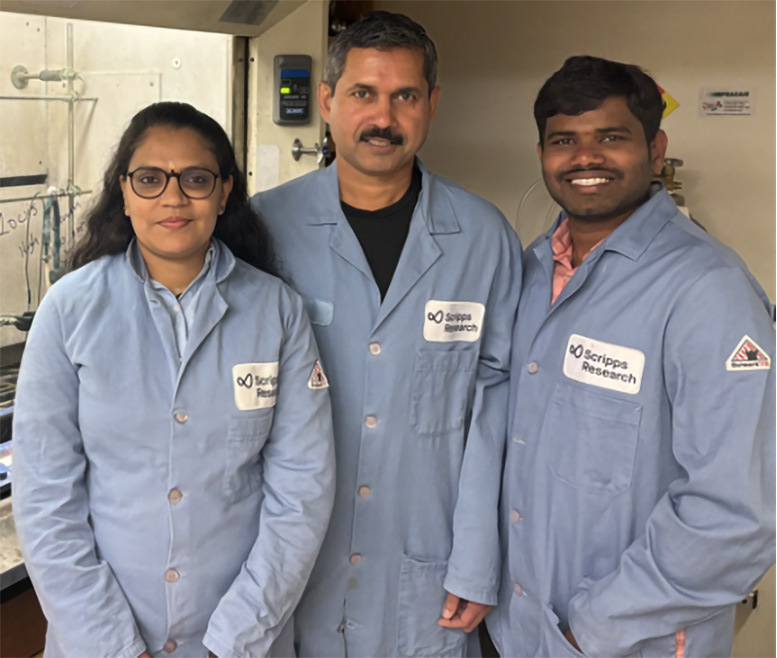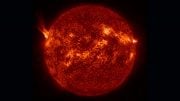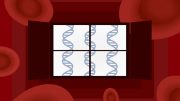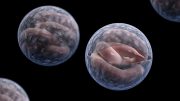
A recent study by Scripps Research proposes a credible pathway for the early formation and evolution of protocells, suggesting that phosphorylation might have been crucial in developing complex, functional precursors to life on Earth about 4 billion years ago. This discovery enhances our understanding of the origins of life and the early Earth’s chemical environment. Credit: SciTechDaily.com
Recent discovery of a new phospholipid narrows the gap in understanding how primordial cells emerged during origin of life.
Approximately 4 billion years ago, Earth was in the process of creating conditions suitable for life. Origin-of-life scientists often wonder if the type of chemistry found on the early Earth was similar to what life requires today. They know that spherical collections of fats, called protocells, were the precursor to cells during this emergence of life. But how did simple protocells first arise and diversify to eventually lead to life on Earth?
Now, Scripps Research scientists have discovered one plausible pathway for how protocells may have first formed and chemically progressed to allow for a diversity of functions.
The findings, recently published in the journal Chem, suggest that a chemical process called phosphorylation (where phosphate groups are added to the molecule) may have occurred earlier than previously expected. This would lead to more structurally complex, double-chained protocells capable of harboring chemical reactions and dividing with a diverse range of functionalities. By revealing how protocells formed, scientists can better understand how early evolution could have taken place.
The Building Blocks for Life
“At some point, we all wonder where we came from. We’ve now discovered a plausible way that phosphates could have been incorporated into cell-like structures earlier than previously thought, which lays the building blocks for life,” says Ramanarayanan Krishnamurthy, Ph.D., co-corresponding senior author and professor in the Department of Chemistry at Scripps Research. “This finding helps us better understand the chemical environments of early Earth so we can uncover the origins of life and how life can evolve on early Earth.”
Krishnamurthy and his team study how chemical processes occurred to cause the simple chemicals and formations that were present before the emergence of life in prebiotic Earth. Krishnamurthy is also a co-leader of a NASA initiative investigating how life emerged from these early environments.
Vesicles within the protocell-like structure. Credit: Scripps Research
In this study, Krishnamurthy and his team collaborated with the lab of soft matter biophysicist Ashok Deniz, PhD, co-corresponding senior author and professor in the Department of Integrative Structural and Computational Biology at Scripps Research. They sought to examine if phosphates may have been involved during the formation of protocells. Phosphates are present in nearly every chemical reaction in the body, so Krishnamurthy suspected they may have been present earlier than previously believed.
Scientists thought protocells formed from fatty acids, but it was unclear how protocells transitioned from a single chain to a double chain of phosphates, which is what allows them to be more stable and harbor chemical reactions.
Experimental Insights into Protocell Evolution
The scientists wanted to mimic plausible prebiotic conditions—the environments that existed prior to the emergence of life. They first identified three likely mixtures of chemicals that could potentially create vesicles, spherical structures of lipids similar to protocells. The chemicals used included fatty acids and glycerol (a common byproduct of soap production that may have existed during early Earth). Next, they observed the reactions of these mixtures and added additional chemicals to create new mixtures. These solutions were cooled and heated on repeat overnight with some shaking to promote chemical reactions.
They then used fluorescent dyes to inspect the mixtures and judge if vesicle formation had taken place. In certain cases, the researchers also varied the pH and the ratios of the components to better understand how these factors impacted vesicle formation. They also looked at the effect of metal ions and temperature on the stability of the vesicles.
“The vesicles were able to transition from a fatty acid environment to a phospholipid environment during our experiments, suggesting a similar chemical environment could have existed 4 billion years ago,” says first author Sunil Pulletikurti, a postdoctoral researcher in Krishnamurthy’s lab.
It turns out that fatty acids and glycerol may have undergone phosphorylation to create that more stable, double-chain structure. In particular, glycerol-derived fatty acid esters may have led to vesicles with different tolerances to metal ions, temperatures, and pH—a critical step in diversifying evolution.
“We’ve discovered one plausible pathway for how phospholipids could have emerged during this chemical evolutionary process,” says Deniz. “It’s exciting to uncover how early chemistries may have transitioned to allow for life on Earth. Our findings also hint at a wealth of intriguing physics that may have played key functional roles along the way to modern cells.”
Next, the scientists plan to examine why some of the vesicles fused while others were divided to better understand the dynamic processes of protocells.
Reference: “Experimentally modeling the emergence of prebiotically plausible phospholipid vesicles” by Sunil Pulletikurti, Kollery S. Veena, Mahipal Yadav, Ashok A. Deniz and Ramanarayanan Krishnamurthy, 29 February 2024, Chem.
DOI: 10.1016/j.chempr.2024.02.007
The work was supported by the NASA Astrobiology-Exobiology (grant 80NSSC20K0625) and the Simons Foundation (grant 327124FY19).










So it doesn’t really “rewrite” the story as much as it clarifies some of its finer details. Mindblowing, lemme tell ya…
Evolution isn’t proven by science nor has any standard of principle, you can’t work with what you don’t know are facts, where do you expect to get? To a false conclusion?
Says a moron who is commenting on an article about abiogenesis. Learn to tell the difference.
Isnt it odd that so many incredibly complex concepts and systems all just happened to pop up by chance?
The entire universe is based on math. Very complex calculations across billions of different interdependent topics.
Even the base elements and concepts of the universe had to be designed by intelligence in order to trigger the chain of events that followed.
Not recognizing that is being a moron.
Looking for results that confirm your bias is not science.
Conducting experiments to test out hypotheses IS science… which was what was done in this case.
People like Chunky are idiots trying to appear intelligent and failing.
Stop grasping for straws until it’s too late for you!
Exciting stuff, eagerly awaiting further development
It’s quit funny reading this when you know that there are so many pieces of evidence that contradict some of the statements made here and in other unscientific narratives.
“It turns out .. may have been happened” is not a scientific statement. You may come up with certain chemical reactions and try to build step-by-step model of transition from basic molecules to protocells indicating on each step necessary conditions for this particular step to happened which is one out of billions. Then it should be given more or less plausible arguments that such conditions may have existed on early earth. Then you may connect it to Origin of life hypothesis. Until then all these experimentations has no right to be called origin of life research